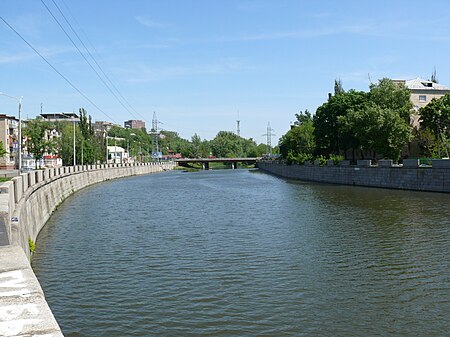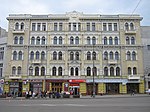Kharkiv (river)
Belgorod Oblast geography stubsGeography of KharkivKharkiv Oblast geography stubsRivers of Belgorod OblastRivers of Kharkiv Oblast ... and 3 more
Russia river stubsTributaries of the DonetsUkraine river stubs

The Kharkiv or Kharkov (Ukrainian: Ха́рків, Russian: Харьков) is a river in Kharkiv Oblast, Ukraine, a left tributary of the Lopan. It originates from the town of Oktyabrsky in Belgorod Oblast, Russia and it falls into Lopan in the city of Kharkiv. The river Kharkiv may have given the city of Kharkiv its name. The river is also known as a place for people who enjoy cold-water swimming known as morzhei or "walruses" to swim.
Excerpt from the Wikipedia article Kharkiv (river) (License: CC BY-SA 3.0, Authors, Images).Kharkiv (river)
Netechenska Embarkment, Kharkiv Москалівка
Geographical coordinates (GPS) Address Nearby Places Show on map
Geographical coordinates (GPS)
| Latitude | Longitude |
|---|---|
| N 49.9853 ° | E 36.2239 ° |
Address
Лопанська стрілка
Netechenska Embarkment
61012 Kharkiv, Москалівка
Kharkiv Oblast, Ukraine
Open on Google Maps










